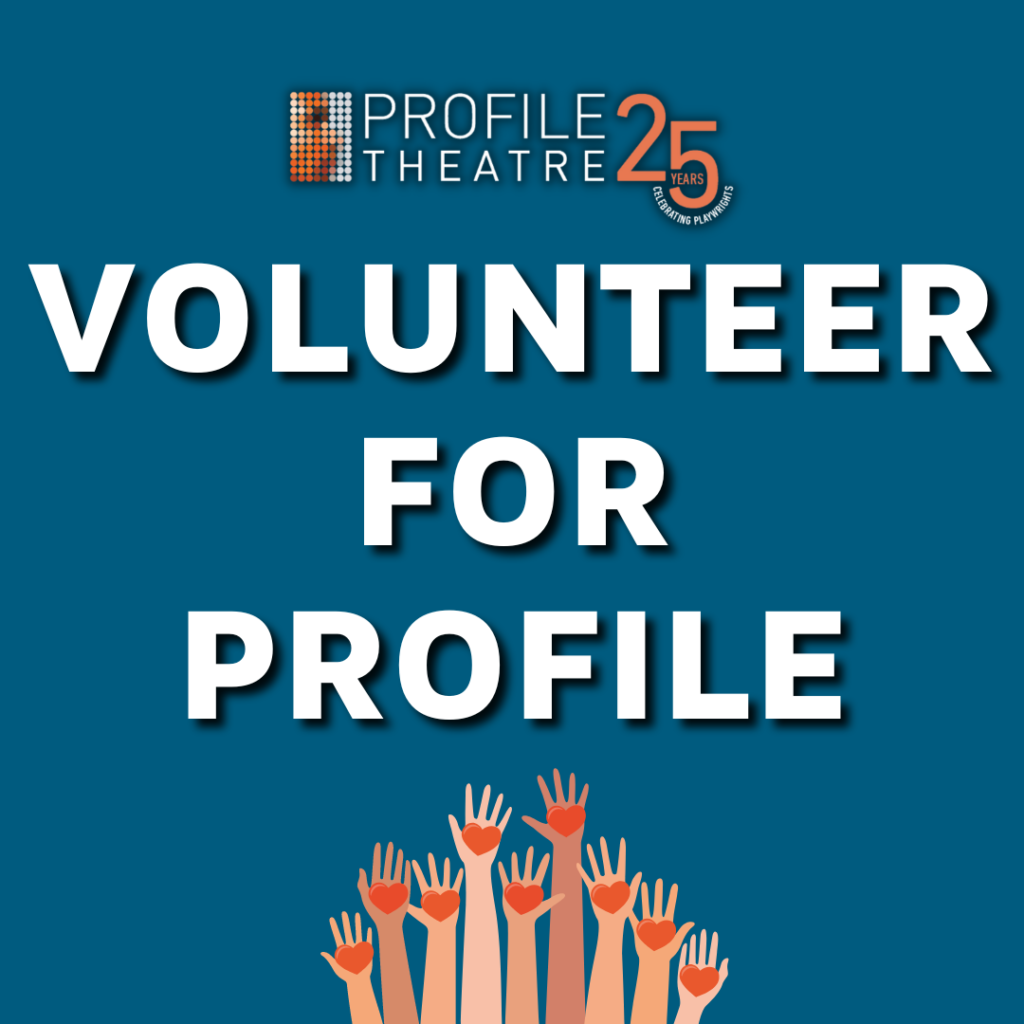VISION 2020: CHRISTOPHER ACEBO
By David Bates of Oregon ArtsWatch
The longtime OSF designer and arts leader says extending equity to under-represented groups provides a way forward for everyone
As is true of many of our Vision 2020 participants, Christopher Acebo wears many hats. Until leaving recently to pursue freelance opportunities, he was associate artistic director of the Oregon Shakespeare Festival in Ashland. In 14 seasons there, his work included virtually every aspect of play production, from season planning and casting to design; he also participated in strategic planning and creative team selections.
He worked on more than 30 productions at OSF, including Robert Schenkkan’s All The Way, which also played on Broadway and won the 2014 Tony Award for best play. His work has also been in theaters in Portland and around the country. Beginning Jan. 16, he’ll be directing Lynn Nottage’s Sweat at Profile Theatre in Portland.
At OSF, Acebo initiated and curated the Latinx Play Project, which developed and presented new plays and provided a forum for artists, producers, and audiences to discuss and advance Latinx theatre. He was also a founding member of the Latinx Theatre Commons and in 2013 was presented with the LTC Award for Outstanding Advocacy for Latinx Voices in the New American Theater.

For seven seasons, he was an ensemble member of the nationally acclaimed Cornerstone Theater Company in Los Angeles. He also has taught at Cal State University in Los Angeles and the University of California-San Diego. Along with his OSF duties in Oregon, Acebo is the immediate former chairman of the Oregon Arts Commission and a former board member of Theatre Communications Group.
How would you describe the general state of artistic and cultural life in Oregon?
I have both optimism and pessimism when it comes to the arts in Oregon. The optimism comes from the work I’ve been experiencing. The quality, breadth, and social activism is flourishing, and artists in the state have become powerful beacons creating extraordinary work and calling out injustice in various forms — from theaters that are pushing the boundaries of the stories they’re telling to art venues investing in shows by artists that have not had a platform to express themselves to a broader audience. Arts organizations are looking at their operations and delving into more equitable representation.
But there’s a flip side?
The pessimism comes in the support and/or lack of value that we sometimes give artists and organizations. I’ve become skeptical of the nonprofit structure in the arts in that it can rely too heavily on the wealthy class and that can affect artistic risk and progress. Arts organizations then have to twist their missions and staffs to be able to get support from a variety of funding sources — including foundations, government/public and patrons — to do their vital work. That amounts to a lot of input and output and it’s a taxing situation. I’m not trying to blame good people and intentions, but it’s an old system that sometimes grinds against progress.
Tell us a bit about your work on the Oregon Arts Commission over the past year. And what’s on the agenda for the coming year? What are the opportunities and challenges?
The evolution of my time on the commission has been a very rewarding experience. In the first few years when I joined, we were able to travel to various parts of the state and meet with rural artists, arts leaders, and advocates. Those commissioner meetings and art salons provided more rural connections and support outside the metro area. Unfortunately, those outreach efforts have scaled back due to budget cuts and those interactions between commissioners and artists now have to be virtual.
The good news is that within the commissioner body, we have representation from coastal, central, eastern, and southern Oregon. We’ve also simplified our application process and requirements and offer support and feedback to help artists and small organizations and not overburden their operations. We are entering a strategic planning process that will take in our new spending reality but will continue to advocate for artists, organizations, and education.
One of the most rewarding parts of my tenure as chair was the Art Summit in 2017 that brought together a bright spectrum of our creative community. We also reinstated the Governor’s Arts Awards and made room for conversations and interaction with artists and allies. And I got to meet and interview one of my personal heroes, Tony Kushner!
On the whole, though, I have to say the epiphany for me in the last few years has been my understanding of the artistic contributions of Native communities. The visual expression, storytelling culture, and community-building through art-making is breathtaking in its capacity to hold truth, anger, beauty, and laughter together and is very inspiring.

You have a background as a theater artist and also as a teacher, so I’m curious how those experiences have been useful to you in advisory/administrative type work — the commission, the Theatre Communications Group, etc.
I realize I stand in a very interesting intersection. Starting my career as a working artist, delving into higher education, then being part of the leadership of the largest arts organization in Oregon, participating on the advocacy level with the commission and now, since leaving OSF, moving back into life as a freelance artist and creative individual. Living and working at this intersection in Oregon for the past 14 years has had a profound impact. My sense is that Oregon is a place of invention and that a person can make an impact and shift the landscape. I think that out of necessity, artists are required to be hybrid individuals, and therefore we get to interact with a wide range of people, and that informs our work. There is an extraordinary creative community that connects art to life and makes our state more livable, more active, and more thoughtful as a result.
Given the advocacy award you received a few years ago from Latinx Theatre Commons, I’m wondering if you could weigh in on equity in Oregon. OSF has done some extraordinary and visible work in this regard, but what about the rest of Oregon? What are you seeing?
For me, the most important work that I’ve been able to do in the last decade is about advocacy and giving opportunity to artists that I deeply believe in and who may not have had a clear path to the “castle.” It’s very simple: If you control the gate to the castle, you decide who can get in. In my time in Oregon, I have seen the leadership in our state shift in remarkable ways and it’s thrilling. But what’s thrilling for some can cause deep fear and resentment in others. Creating a system of equity then becomes a powerful way forward for our entire community. That system has to be in place in order for the work to have integrity. If the art doesn’t reflect the community, then it struggles to find its meaning and loses its impact because you just don’t trust it; it only holds historic value, not progressive value.
When I first came to OSF, we started programming more Latinx-based plays, because they were both my story and the stories of a growing population in the state, and we felt it was critical for that voice to be heard (among other stories by marginalized communities). A few seasons later, the artistic office got a comment card that said, “Why all the Spanish in plays? Are the Mexicans running this place now?” And of course, the answer is “Yes!” There is now an American-Mexican in the artistic office shaping the choices being made of what the audience will see.
At OSF, there continues to be a vocal group of audience members that want to keep things the way they were. For people that have been over-represented in the arts that might feel like erasure. But we have to make room for the stories of under-represented people so we can get a deeper sense of the challenges and triumphs that are part of our larger community. I still have that unsigned comment card as a reminder that the stories we choose to tell are a powerful force and can have a profound influence.

The United States is obviously in a period of political and social turbulence, and regardless of the outcome of any election, it is likely to be exacerbated by ecological problems related to climate change and industrialization. How do you see those issues resonating and finding expression among artists? What is the responsibility of an artist in such times?
The sole responsibility of the artist is to reflect what they see. We have to nurture the seers amongst us, because they can show us who we are and what we may become, and that can be exhilarating and also scary. Our collective responsibility as an audience/viewer/listener is to enter every artistic experience with deep curiosity and empathy. My belief is that when both these things happen (the artist shows and the viewer sees), the conversation that emerges gives us a way forward together, especially in troubling times.
What are your goals and expectations for 2020 in the arts, professionally and personally?
I am excited about 2020 and diving back into my work as a freelance artist and advocate. I turned 50 this year and it’s been an exhilarating year of change. I’m looking at shifting my art-making to include more directing, designing outside of the theater, and exploring mission-driven filmmaking. I’m also expanding my own creative consulting practice to help organizations connect the dots between art, culture, and community to deepen their impact.
If you could make one thing happen in the artistic/cultural world in 2020, what would it be?
I would love Oregon to become the first state in the nation that provides every student an opportunity to have five arts experiences before they graduate high school. I have a plan!
Click here for the full article


